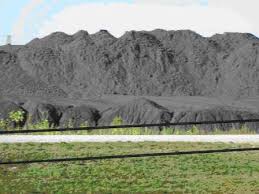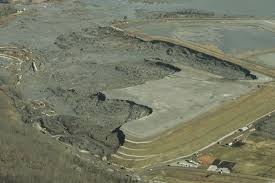
In a move that could directly affect coal-fired power plants in Oklahoma, the Environmental Protection Agency this week finalized a rule on how coal ash is stored. How they might affect Oklahoma is yet to be determined.
Just a few weeks after the EPA was roundly criticized by environmental groups for turning over coal-ash regulations to the state of Oklahoma, the agency overhauled requirements and gave more flexibility to states. Some of those states as well as industry leaders had been trying to see an easing of the restrictions since they were adopted in 2015.
The far-reaching rule will dictate how coal ash, which has contaminated waterways in two high-profile spills in Tennessee and North Carolina in the past decade, is stored at more than 400 coal-fired power plants around the country according to a report in the Washington Post.

The new standards are considered to be the first major rules signed by EPA acting administrator Andrew Wheeler who assumed control of the agency following the resignation of Scott Pruitt, the former Oklahoma Attorney General.
When asked about the implications for coal ash operations in Oklahoma, Erin Hatfield at the Oklahoma Department of Environmental Quality stated, “These are not the same. It’s a change in EPA regulations, and DEQ will review to determine if we should incorporate those changes into our regulations.”
What it means is that existing ash ponds, like those in southeast Oklahoma could see an extended life from April 2019 to October 2020. But it will also allow states to suspend groundwater monitoring in some cases and allow them to certify if the facilities meet adequate standards.
The EPA estimates the rule changes could save the industry any where from $28 million to $31 million a year in compliance costs.
“These amendments provide states and utilities much-needed flexibility in the management of coal ash, while ensuring human health and the environment are protected,” Wheeler said in a statement. “Our actions mark a significant departure from the one-size-fits-all policies of the past and save tens of millions of dollars in regulatory costs.”
It was in March when then-administrator Pruitt announced the proposed regulation after the industry petitioned the agency to reconsider existing standards for the coal ash which contains mercury, cadmium, arsenic and other heavy metals.
Reaction came as expected from the different camps on the subject. Jim Matheson, who heads the National Rural Electric Cooperative Association, praised the deadline extension, saying in a statement that “EPA is working to avoid unintended consequences while the agency updates the original rule” to reflect new authority Congress gave the agency a year and a half ago.
Earthjustice senior counsel Lisa Evans criticized the agency for making concessions to the power sector. “Wheeler is on course to give industry exactly what it asks for, regardless of the damage it wreaks on our drinking water and health,” she wrote in an email.
Avner Vengosh, a Duke University expert on the environmental impacts of coal ash, said that scaling back monitoring requirements, in particular, could leave communities vulnerable to potential pollution.
“We have very clear evidence that coal ash ponds are leaking into groundwater sources,” Vengosh said. “The question is, has it reached areas where people use it for drinking water? We just don’t know. That’s the problem.”
The original rule adopted by the Obama administration 3 years ago increased inspections and monitoring of coal ash disposal sites such as the well-known one at Bokoshe in southeast Oklahoma. The rules required liners in new waste pits to prevent leaks that could threaten nearby drinking water supplies.





